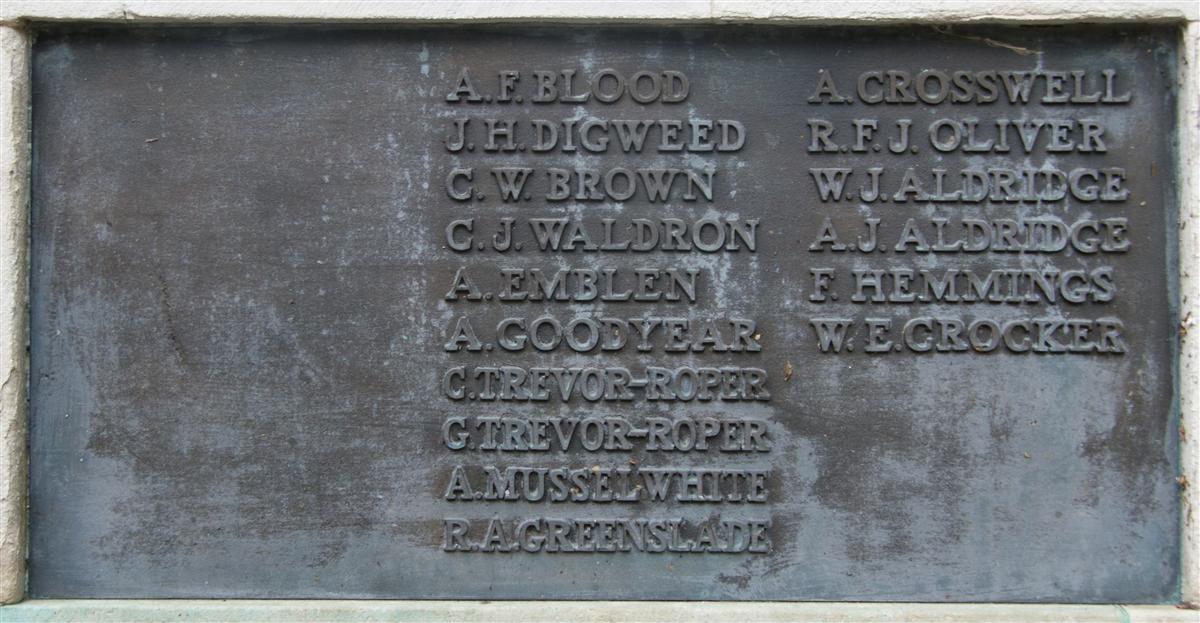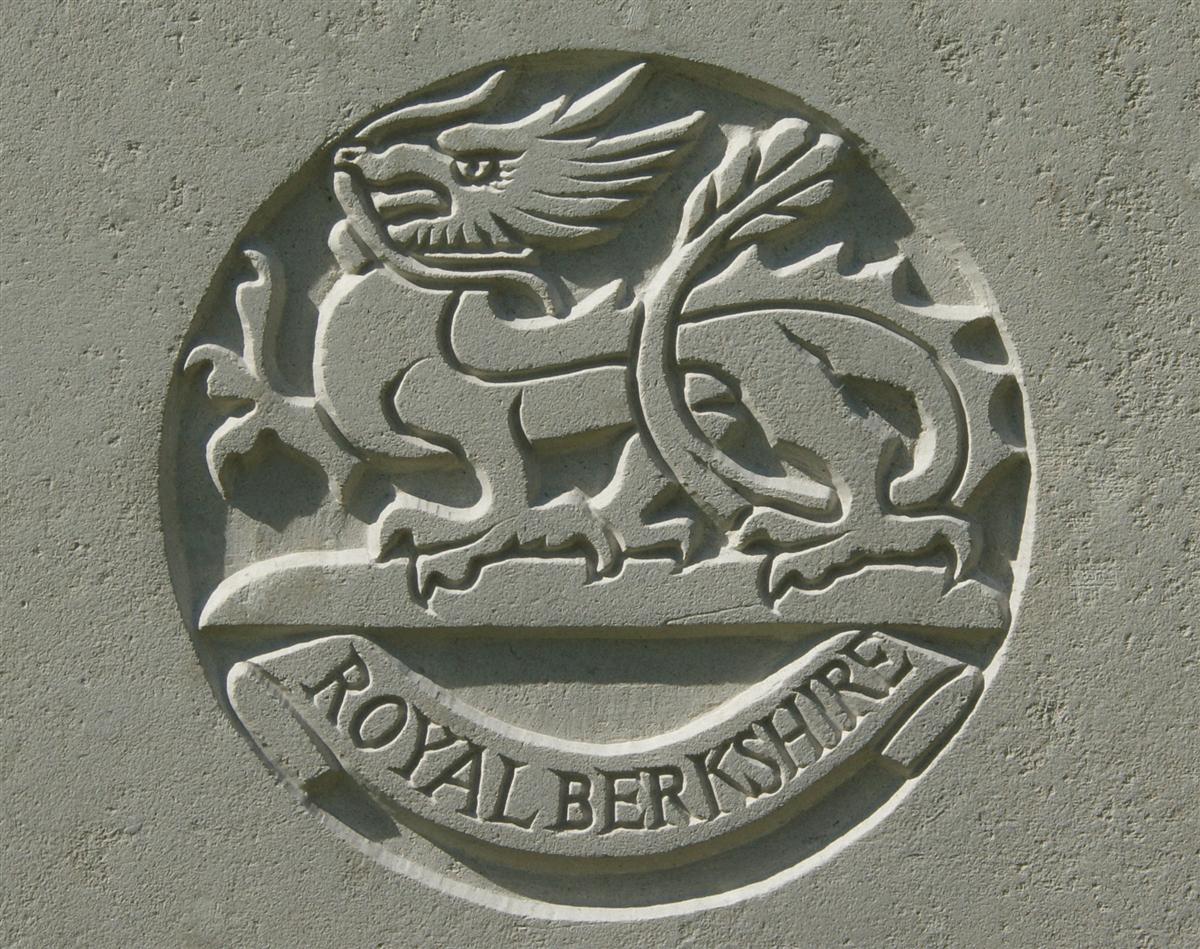Arthur Reginald Greenslade
Petty Officer J15223 Arthur Reginald Greenslade, Royal Navy
Reginald was born in Paddington on 18 April 1889, seemingly the son of George Greenslade and his wife Ellen née Morton. If this was the case he was one of twelve children born to his parents six of whom died in infancy. The five other survivors were Cecil (born 1886), Winifred Gertrude (1888), George Philip (1895), Frederick (1899), and Florence Jessie (1902). The names of four of the infants can be deduced from the national index to birth and death registrations: Gertrude Alice (1883), George (1885), Albert Leopold (1891), Charles (1894); all died within weeks of their birth.
Reginald’s birth was registered as Arthur Reginald, but his military records show Reginald Arthur.
The doubt about his birth comes from his burial, which took place in Newtown Road Cemetery, Newbury on 13 September 1922. In 1949 and 1957 two further burials took place in the same plot – the remains of Henry Charles King and his wife Ellen. Ellen was the sister of George Greenslade, ostensibly Reginald’s aunt. Usually multiple interments indicate a relationship a little closer than nephew and aunt – could Reginald have been Ellen’s illegitimate child? Raised by her brother as a part of his family?
In 1905 George Greenslade moved his family from Paddington to Newbury (6 Craven Street) very possibly following Henry and Ellen King, who had moved to Newbury a couple of years earlier. George worked as a coachman, working for a household in London; perhaps he was displaced by a chauffeur and was looking for new employment? In Newbury he worked at a livery stables, the largest of which, and hence his most likely employer, operated out of the Pelican Yard in Speenhamland.
Reginald did not follow in his father’s footsteps – on 1 October 1907, aged eighteen, he joined the Royal Navy on a short service enlistment. This involved spending seven years in the Navy followed by a further five years in the Reserve, liable to recall to uniform in the event of national need. He received the service number SS2144 – the first S shows he was a short service man, the second that he was a seaman or signaller. On 23 December 1911 he converted to become a long service man (12 years plus an optional 10 more to qualify for a pension). By this time he was rated as an Able Bodied Seaman his re-enlistment resulted in a change of service number to J15223 (J indicating he was Seaman or Communications).
When the war began in August 1914 Reginald was serving on HMS Princes Royal a new Lion class battle-cruiser commissioned the previous year. The Princess Royal took part in the Battle of Heligoland Bight on 28 August 1914 and the Battle of Dogger Bank on 24 January 1915, where her sister ship HMS Lion was badly damaged. She also took part in the Battle of Jutland on 31 May / 1 June 1916, but Reginald was not longer on board, he was in Portsmouth, probably on a training course after which he was promoted to Leading Seaman and posted to HMS Excellent. This was still in Portsmouth and was the Navy’s gunnery school. He then served in a variety of ships – HMS Attack (destroyer), HMS Apollo (minelayer), HMS Blenheim (cruiser) before returning to HMS Excellent in the winter of 1917/18. He then joined a brand new destroyer, HMS Viceroy, where he was promoted to Petty Officer on 1 September 1920. On 27 January 1921 he returned to Portsmouth and was on the books of HMS Excellent, but was probably under treatment in the Royal Hospital Haslar - the naval hospital in Gosport. He was discharged from the navy on 4 May 1921 suffering from ‘organic heart disease’.
He returned to his parents in Newbury, where he died on 8 September 1922; he was buried in Newtown Road Cemetery on 13 September.
As can be seen Reginald was not an obvious casualty of war, yet his name appears on the Newbury Town War Memorial. His name was not on the order of service used at the dedication and unveiling ceremony on 1 October 1922, possibly because he was a late addition. It is uncertain whether his name was inscribed on to the memorial before the unveiling or shortly thereafter. Several names were added to the memorial after the order of service was prepared. All but Reginald appear on tablet 6, while he is on tablet 8.
His death is not commemorated by the Commonwealth War Graves Commission (it occurred after their cut-off date for World War I commemorations). Had he been invalided out in 1919 and died before the cut-off date in August 1921 there is every chance that he would have been accepted as a war casualty – the Newbury war memorial committee evidently had a looser set of criteria for commemoration. That said Reginald served his country throughout the war, took part in two of the most significant naval engagements of the war and during his service developed the condition that eventually killed him. There are men whose names are on the memorial that did far less.

Reginald's name on Newbury War Memorial (centre) |
Nine names have been added to the WWI section of the memorial since the order of service was printed, there only two tablets with space for more names – tablet 8, where Reginald’s has been added , and tablet 6 where the other eight names have been added.
Can anything be read into this? It may indicate that his name was actually added before the unveiling, in the three weeks between his death and the unveiling – whereas the other eight were added, very possibly as one batch, in response to demand after the unveiling. Adding names was a simple process on the original memorial, where the names were inscribed into stone tablets. Since the current bronze tablets replaced the stone ones in 1950 the addition of names would be a far more complex and expensive process.

The regimental badge of the Berkshire Regiment, as used on CWGC headstones. |

Find a memorial :
| Died this day: | |
| 15 January 1943 | |
| L C Lawrence | |
| Newbury |

Like this site? Show your appreciation through a donation to a great charity.